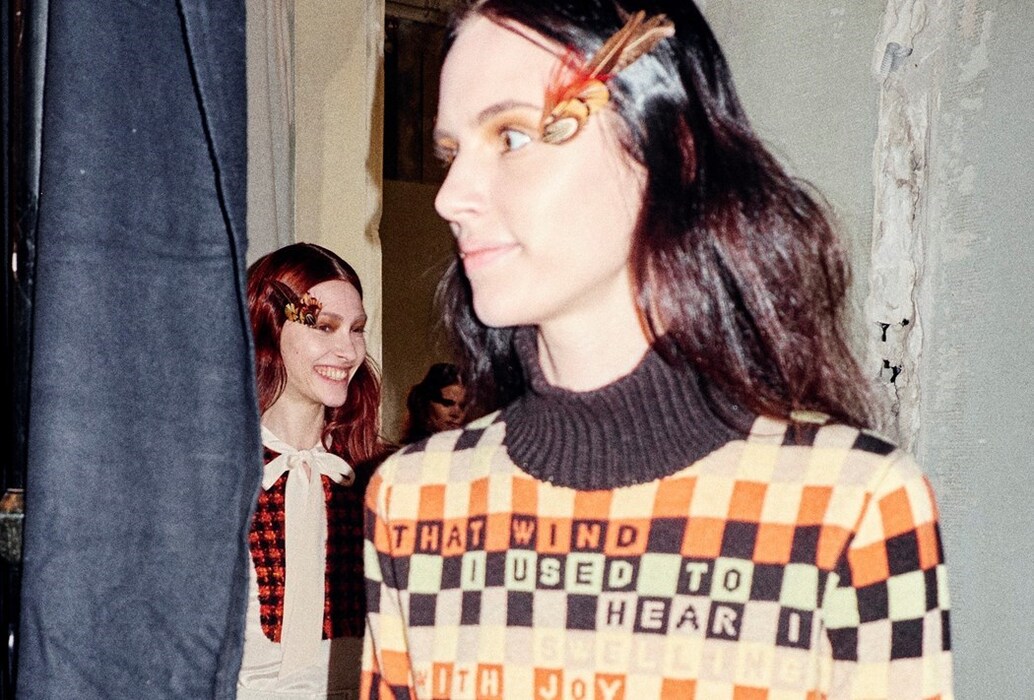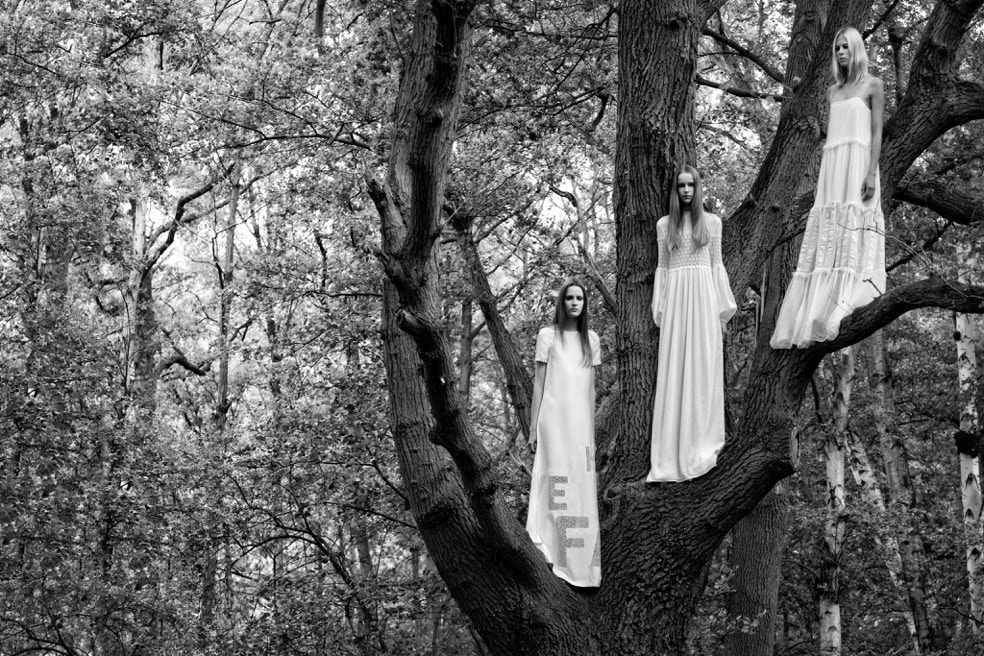For the final part in our series on literary-inspired luxury, Osman Ahmed speaks to Antwerp-based designer Veronique Branquinho about her romantic heroines
Antwerp-based designer Veronique Branquinho made a name for herself with her debut Victoriana collection in 1997. Yet where historicism in fashion has sometimes veered towards costume-y spectacle or Madame Bovary eroticism, Branquinho’s brand of high-necked glamour has never been stuffy. Instead, it is assured of the quiet sexual power of the woman who knows that subtlety and conviction is much more powerful than high-octane frou-frou. Veronique Branquinho’s woman is the kind that Charlotte Brontë had in mind when writing Jane Eyre (1847) and Villette (1853): “Fashion for me is a language and I want to tell a story,” says Branquinho. Her most recent collections, she says, have been inspired by the poetry of Emily Brontë and the work of Lewis Carroll, and are true to her cascading, covered-up silhouettes. “I call it a bonbon package, you know, how you want to present yourself to a man,” is how she described the prevailing Trump-approved aesthetic. “It’s a fantasy of a man projected onto a woman. I feel like that is the main image and it’s hard for me to understand that as a woman.”

As a designer in her mid-40s, Branquinho’s career has always been an antidote to the bells-and-whistles success of mainstream fashion designers. She graduated from the hallowed halls of Antwerp’s Royal Academy of Fine Arts at the tail-end of Belgium’s major contribution to fashion, the Antwerp Six. “I like the little roads in life – I don’t think the main highway is the most interesting way,” she explains of her low-key profile. “You can say that in all of my work. Even if I touch references, I like to twist them and give them layers and maybe a little mindfuck. It’s the opposite to the fast first-degree world we are living in.” Last year’s autumn collection began a creative love affair with Brontë that would inform her next couple of collections. Sweaters, especially, featured a checkerboard intarsia with words from Emily Brontë’s poem I’m Happiest When Most Away. “I took it from a really beautiful book I have called Poems of Solitude,” explains Branquinho. “I think that is part of my women; they’re independent and strong, but at the same time they’re fragile and I can imagine they get lost in romantic fantasies of solitude. It’s not an in-your-face slogan because I like the power of a whisper.”

The sentiment carried through into her next pre-collection, and was felt in this autumn’s long, gauzy Victoriana dresses with mannish tailoring layered on top and leather wellington boots underneath, models’ faces framed by swirling Elizabethan ruffs and the hoods of sweeping shearling-lined parkas. “It’s a darker mood,” she says. “I like that there is a twist between what is elegant and feminine but also very controlled and styled. It’s the balance between those things that I like. Mainly, I like that it’s a bit nostalgic and melancholic as a reaction to the T-shirts and jeans, a look which my friend describes as ‘global corporate boredom’.” A fan of the great romantic novels of the 19th century, it’s unsurprising that Branquinho relishes in life away from the hoi polloi – just like Charlotte Brontë’s heroines. “Living here, we are not in a rat race and elsewhere, it is very competitive,” she says without utter confidence. “I’m happy to go to Paris to show my collection and meet everyone but I’m also happy to go home.” Who can blame her? There really is no place like home, especially with a good book.
